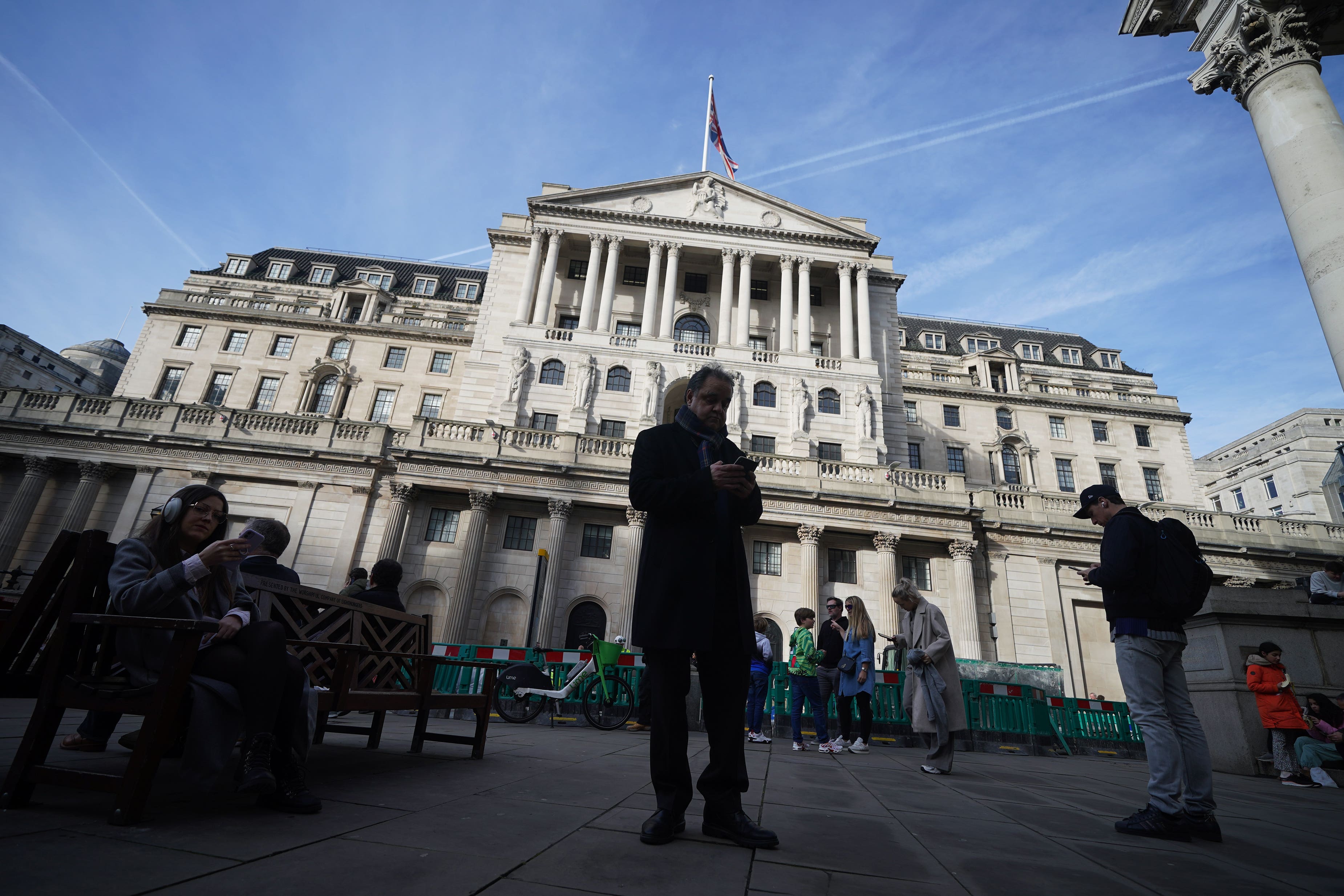Has a stubborn inflation rate killed off a cut in interest rates?
The consumer price index has fallen less than the Bank of England had expected – but it’s still at a two-and-a-half-year low, says James Moore, and shrinking energy prices could make next month’s figure more likely to ease interest rates


The inflation genie has given warning that it isn’t quite ready to return to its bottle, sharpening the Bank of England’s interest rate dilemma.
The rate at which prices rose fell only slightly in the year to March. The Office for National Statistics’ consumer prices index declined to 3.2 per cent from 3.4 per cent, higher than the 3.1 per cent expected by economists contributing to the regular Reuters poll.
Inflation now sits at a two-and-half-year low and is far removed from the 41-year high of 11.1 per cent, recorded in October 2022. But the worse-than-expected number still feeds into an increasingly mixed picture facing the rate-setting Monetary Policy Committee (MPC) when it meets early next month.
The UK is in a better place than the US, where inflation jumped to 3.5 per cent from 3.2 per cent last month, but its situation is markedly less favourable than the eurozone’s 2.4 per cent, within sight of the European Central Bank’s 2 per cent target.
True, unemployment is ticking up, but wages still are rising at a 6 per cent clip. This is good news for a workforce battered by an extended cost of living crisis, but it is the sort of number that will raise hairs on the backs of the necks of most MPC members, with the notable exception of dove-in-chief Swati Dhingra, who has consistently argued for an early rate cut.
The core inflation number, which excludes the most volatile components – food, alcohol, fuel and tobacco – also makes for uncomfortable reading. While it declined to 4.2 per cent from 4.5 per cent, this was also still ahead of expectations.
The ONS noted that while the cost of raw materials fell by 2.5 per cent, down from a revised fall of 2.2 per cent in February, the cost of goods leaving factories rose by 0.6 per cent, up from a rise of 0.4 per cent last time. But the rate at which the price of services increased was barely changed, easing only slightly to 6 per cent from 6.1 per cent.
There lies a monster under the MPC’s bed. Services represent the dominant part of the UK economy, and their prices are closely watched by rate-setters. They have proven markedly resistant to the MPC’s hard medicine. That number is simply too high.
ONS chief economist Grant Fitzner also highlighted the rising price of oil as a problem – but there was better news on food, which has been causing real pain, particularly for those at the lower end of the income scale. Food price inflation fell by a full point to 4 per cent from 5 per cent, although the cumulative impact of price rises in this sector – they were rising at 17 per cent at their peak – has acted as a lead weight chained to the legs of poorer families, some of whom have inevitably fallen over as a result.
A big drop in inflation is still on the cards for April, when the impact of Ofgem’s reduced energy price cap will filter into the figures. The number could yet fall to the MPC’s 2 per cent target. But oil prices at $90 barrel and rising, fuelled by the ongoing tension in the Middle East, could spoil the party.
It was notable that Capital Economics, one of the more optimistic commentators on the subject of rate cuts, was much less positive in response to the figures this time around.
“As long as inflation continues to fall fast in the coming months as we expect, the Bank may still feel comfortable cutting interest rates in June. However, the big risks are that inflation continues to ease more slowly or stalls as it has in the US and/or there is a big jump in energy prices triggered by tensions in the Middle East. That could prompt the Bank to conclude that rates need to stay at 5.25 per cent for longer,” it said in a research note.
There are three distinct groups on the MPC where the dovish Dhingra, an external member, is countered by hawk-in-chief Catherine Mann, who is often joined by Jonathan Haskell. Megan Greene, the fourth external appointee, is also inclined to their view of the world.
Sitting in between them are the Bank’s five-strong in-house team led by governor Andrew Bailey. They have tended to chart a middle course in between these opposing poles with their votes, and it is their collective view that will ultimately decide when the first cut is made.
The figures on services, wages and the oil price will set their nerves a-jangling. I think any hopes of an early cut in May have now been squashed. The data sent the pound up against the dollar, euro and yen, which tells its own story.
Small businesses and domestic borrowers, particularly people remortgaging, who are at the sharp end of all this, have cause to be uncomfortable about the future further out, too. A quarter-point cut in the summer is still a possibility – but the mood has shifted… and not in a good way.
Join our commenting forum
Join thought-provoking conversations, follow other Independent readers and see their replies
Comments
Bookmark popover
Removed from bookmarks